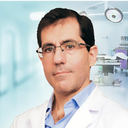Posted underRhinoplasty q&a
Feel like I have inverted V Deformity, any chance this is just apart of healing or bad nose job? (Photos)
Feel like i've got Inverted V Deformity? Im 7 month post op with thick skin, any chance this is just apart of healing or bad nose job?
Answers (53)
From board-certified doctors and trusted medical professionals
Dr. Oliver Chang, MD

Dr. Oliver Chang, MD
Board Certified Plastic Surgeon
Answer
Dr. Catherine Weng, MD

Dr. Catherine Weng, MD
Facial Plastic Surgeon, Board Certified in Otolaryngology – Head and Neck Surgery
Answer
Answered on Jun 13, 2025
Answer
Answered on May 5, 2025
Answer
More Rhinoplasty Questions
See all Rhinoplasty Q&AWE SEND PRETTY
EMAILS
What’s trending? Who’s turning heads? Which TikTok myths need busting? We’ve got you. No fluff, no gatekeeping—just real talk. Get our free, unfiltered newsletter.







